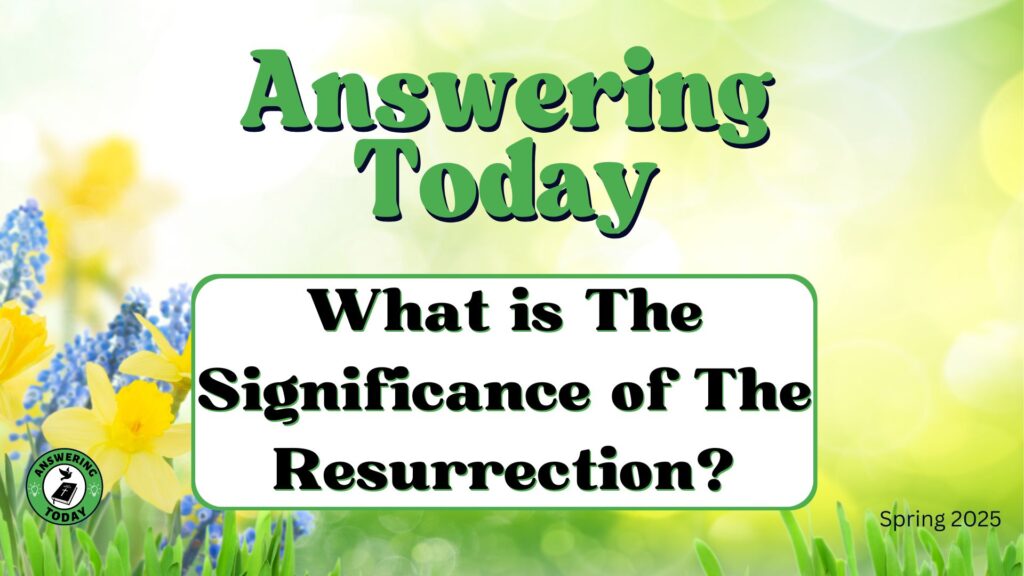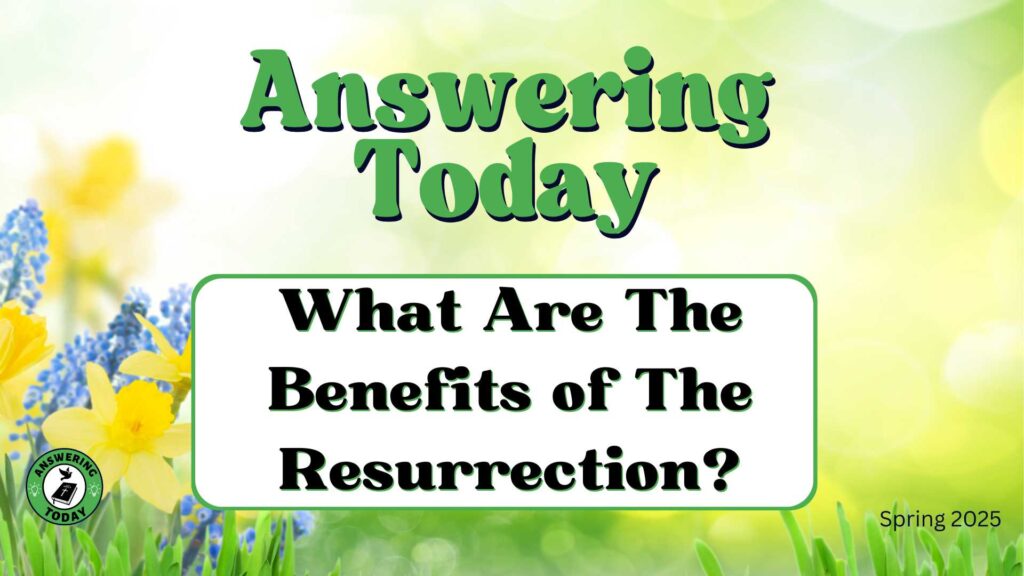QUESTION:
WHAT DOES IT MEAN THAT JESUS IS THE LAMB OF GOD?
ANSWER:
The Lord Jesus Christ is the Lamb of God because He is the only Person in the entire physical and spiritual realms who is worthy to make an atonement for the sins of mankind.
One of the most powerful and theologically rich titles attributed to the Lord Jesus Christ is “the Lamb of God.” This phrase appears in the New Testament, most notably in the Gospel of John, and encapsulates the central truth of the Christian faith: Jesus’ sacrificial death for the forgiveness of sins. But to understand the depth and weight of this title, we must journey back to the Old Testament, to the ancient sacrificial system, and trace the divine thread that leads us to the cross at Calvary.
The Sacrificial System in the Old Testament
In the Old Testament, God instituted a sacrificial system to teach His people, Israel, the gravity of sin and the need for atonement. The Law of Moses prescribed various offerings—burnt offerings, peace offerings, grain offerings, and sin offerings—but the most profound among them involved the shedding of blood.
“For the life of the flesh is in the blood, and I have given it to you upon the altar to make atonement for your souls; for it is the blood that makes atonement for the soul.” — Leviticus 17:11
Sacrifices were central to worship in the Tabernacle and later in the Temple. God required spotless and unblemished animals—lambs, goats, bulls—offered in substitution for the sins of the people. The animal bore the penalty that the person deserved. This system revealed the seriousness of sin and the holiness of God.
The Limitations of the Old Covenant
While the sacrificial system was instituted by God and served an important role, it was inherently limited. It was never meant to be permanent, but rather a shadow of something greater to come.
“For it is not possible that the blood of bulls and goats could take away sins.” — Hebrews 10:4
These repeated sacrifices could only cover sins temporarily; they could not cleanse the conscience or change the heart. The people remained under the burden of guilt, and year after year, sacrifices were offered again and again. The system pointed forward to a better, final sacrifice—one that could actually remove sin.
The Necessity of a Blameless Sacrifice
God’s justice demands that sin be punished. According to Scripture:
“And according to the law almost all things are purified with blood, and without shedding of blood there is no remission.” — Hebrews 9:22
In God’s perfect justice, a penalty had to be paid. But in His perfect mercy, He made a way for the penalty to be paid by another—through substitutionary atonement. However, for that atonement to be effective, the offering had to be perfect. No human being could ever meet that standard because all have sinned.
“There is none righteous, no, not one.” — Romans 3:10
Since no man was without sin, no ordinary man could offer himself for the sins of others. Only someone who was sinless could bear the sins of many.
Jesus: The Perfect Lamb of God
Enter Jesus Christ—the eternal Son of God—who became flesh and lived a sinless life. He came not only to preach and heal, but ultimately to die.
When John the Baptist saw Jesus coming to him at the Jordan River, he proclaimed:
“Behold! The Lamb of God who takes away the sin of the world!”
— John 1:29
This declaration was not poetic imagery—it was prophetic truth. John recognized Jesus as the fulfillment of all the Old Testament sacrifices. Jesus was the Lamb to end all lambs, the sacrifice to end all sacrifices.
He was without blemish or spot:
“Knowing that you were not redeemed with corruptible things, like silver or gold… but with the precious blood of Christ, as of a lamb without blemish and without spot.”
— 1 Peter 1:18–19
Jesus’ death was not accidental; it was intentional. He came to offer Himself as a sacrificial lamb. He carried our sins to the cross and took upon Himself the wrath of God.
“He was oppressed and He was afflicted, yet He opened not His mouth; He was led as a lamb to the slaughter.”
— Isaiah 53:7
This prophetic word from Isaiah describes the suffering servant, fulfilled perfectly in Christ. He bore our griefs, carried our sorrows, and by His stripes we are healed.
JESUS: The One Who Takes Away the Sin of the World
It is vital to reflect on the phrase “who takes away the sin of the world” in John 1:29. In the Old Testament, sacrifices could only cover sin temporarily. The Hebrew word for “atonement” (kaphar) literally means “to cover.” The blood of animals covered sin from God’s sight but did not remove it. It was an act of mercy, but it was not a permanent solution.
Jesus, however, does not merely cover sin—He takes it away. His sacrifice accomplishes what the Law could never do. The Lamb of God removes sin completely—past, present, and future—for all who trust in Him.
“But now, once at the end of the ages, He has appeared to put away sin by the sacrifice of Himself.” — Hebrews 9:26
His atonement is final and total. He was offered once and for all:
“By that will we have been sanctified through the offering of the body of Jesus Christ once for all.” — Hebrews 10:10
This means that no more sacrifices are needed. Jesus doesn’t simply delay God’s judgment—He absorbs it. He doesn’t hide sin—He removes it. Those who come to Him are made clean, completely and forever.
The Power of Jesus’ Sacrifice
Unlike the old sacrifices, Jesus’ death was once for all.
“But this Man, after He had offered one sacrifice for sins forever, sat down at the right hand of God.” — Hebrews 10:12
His sacrifice was sufficient and final. No more lambs are needed. No more blood needs to be shed. Jesus has paid it all.
His blood brings true forgiveness:
“In Him we have redemption through His blood, the forgiveness of sins, according to the riches of His grace.” — Ephesians 1:7
The work of Christ on the cross reconciles us to God. He removes guilt, breaks the power of sin, and opens the way to eternal life.
Why This Matters Today
Understanding that Jesus is the Lamb of God changes everything. It reveals God’s love, justice, and grace in one powerful truth. It tells us:
That our sin is serious.
That we need a Savior.
That God has provided that Savior.
That Jesus alone is worthy to save.
We are not saved by our good deeds or religious rituals, but by trusting in the finished work of the Lamb.
“Worthy is the Lamb who was slain to receive power and riches and wisdom, and strength and honor and glory and blessing!” — Revelation 5:12
This is the anthem of heaven, and it should be the anthem of our hearts. Jesus is not only the Lamb who died—He is the Lamb who rose again and lives forevermore.
Conclusion
To say that “Jesus is the Lamb of God” is to declare the gospel in its purest form. It is to proclaim that God, in His mercy, provided a substitute for sinners. It is to look to the cross and see the love of God poured out in blood.
The entire Bible—from Genesis to Revelation—points to the Lamb. In Genesis, God provided a ram in place of Isaac. In Exodus, the blood of the Passover lamb saved the Israelites from judgment. In Leviticus, the lambs of the tabernacle pointed to atonement. And in the Gospels, the Lamb came—once and for all.
The invitation today is simple and clear: Look to the Lamb. Trust in the Lamb. Worship the Lamb.
As John the Baptist declared:
“Behold! The Lamb of God who takes away the sin of the world!”— John 1:29
May your eyes be fixed on Jesus, the Lamb of God, and may your heart rest in the salvation He alone provides.



